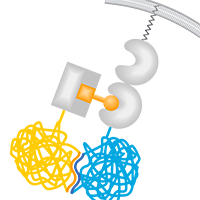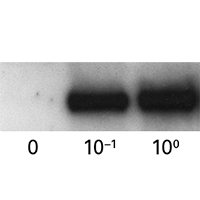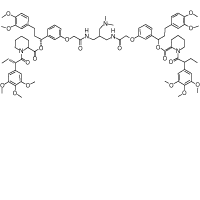iDimerize Inducible Heterodimer System

The iDimerize Inducible Heterodimer System can be used to create and control specific interactions between two different proteins. The proteins of interest are fused to the DmrA and DmrC binding domains, respectively, and dimerization is induced by adding the cell-permeant ligand A/C Heterodimerizer (identical to the AP21967 ligand) to the culture medium or by administering it in vivo. Plasmid and lentiviral (Lenti-X) vector formats are available.
The iDimerize Inducible Heterodimer System can be used to create and control specific interactions between two different proteins. The proteins of interest are fused to the DmrA and DmrC binding domains, respectively, and dimerization is induced by adding the cell permeant ligand A/C Heterodimerizer (identical to the AP21967 ligand) to the culture medium or by administering it in vivo. Plasmid and lentiviral (Lenti-X) vector formats are available.
iDimerize Inducible Heterodimer System (with Tet-On 3G technology)
One challenge of ligand-dependent dimerization experiments is that non-ligand-induced dimerization events may occur if the proteins of interest are expressed at high levels. This is especially problematic if the target proteins are membrane-bound, because the local concentrations can increase quickly due to the limited space on the membrane. We’ve combined iDimerize and Tet-On 3G technologies to eliminate these unwanted events. First, use doxycycline (Dox) to optimize the proteins’ expression to physiologically relevant levels. Then induce dimerization by adding the dimerizer ligand to your culture medium.
Overview
- Achieve small-molecule control of cellular events that are usually activated by protein heterodimerization
- Control the subcellular localization of a target protein
- A/C Heterodimerizer is identical to the AP21967 ligand
- For inducible control of transcription factors, use the iDimerize Regulated Transcription System
- Plasmid and lentiviral (Lenti-X) vector formats are available
- Previously available from ARIAD Pharmaceuticals, Inc., as the ARGENT Regulated Heterodimerization Kit
More Information
Applications
- Create and control interactions between two different proteins
- Create conditional alleles of receptors and signaling molecules
- Activate cell surface receptors or other signaling proteins
- Recruit signaling proteins to specific subcellular locations (e.g., the plasma membrane or nucleus)
- Reconstitute enzyme activity by inducing the interaction of separate polypeptides
- Functional analysis of a signaling pathway in multiple cell types
- Inducible protein dimerization in animal models and cultured cell lines
Additional product information
Please see the product's Certificate of Analysis for information about storage conditions, product components, and technical specifications. Please see the Kit Components List to determine kit components. Certificates of Analysis and Kit Components Lists are located under the Documents tab.
Takara Bio USA, Inc.
United States/Canada: +1.800.662.2566 • Asia Pacific: +1.650.919.7300 • Europe: +33.(0)1.3904.6880 • Japan: +81.(0)77.565.6999
FOR RESEARCH USE ONLY. NOT FOR USE IN DIAGNOSTIC PROCEDURES. © 2025 Takara Bio Inc. All Rights Reserved. All trademarks are the property of Takara Bio Inc. or its affiliate(s) in the U.S. and/or other countries or their respective owners. Certain trademarks may not be registered in all jurisdictions. Additional product, intellectual property, and restricted use information is available at takarabio.com.







